Lettuces and other leafy greens are healthy and some of the easiest edibles to grow. In fact, I would recommend them as the starter kitchen garden plant for new gardeners.
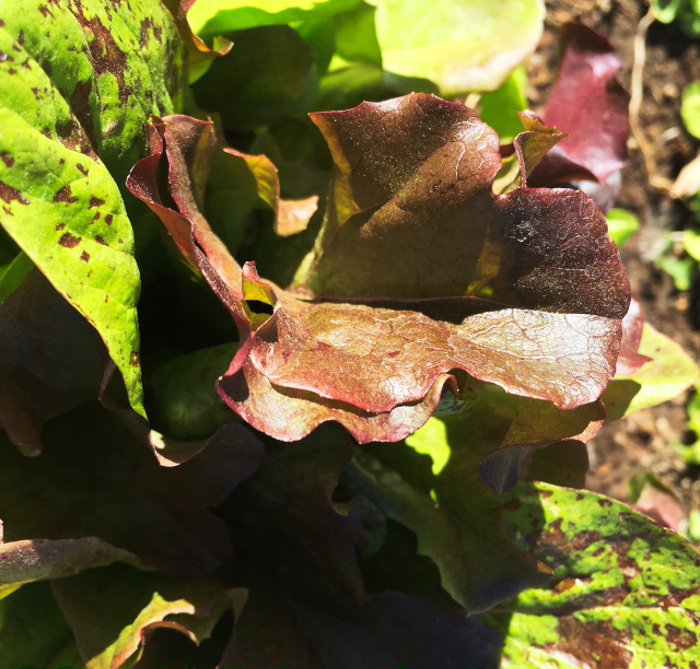
Organic heirloom mesclun is pretty to grow and even better to eat!
Growing Green Leafy Plants Is Easy
- Lettuce, arugula and other greens generally germinate quickly, often in less than a week, from seed. Instant gratification makes gardening way easier and more fun.
- One reason the plants grow quickly is that you eat the leaves – there is no need to wait for flowering and fruit. In fact, if your lettuce flowers, it has bolted, or grown too quickly and too large. And it’s likely bitter or lacking in flavor.
- Since lettuce is a cool-season plant, it can be started earlier in the spring. That’s perfect for impatient gardeners. And you can plant it again in the fall to have a vegetable ready to harvest as other plants fade. It all depends on where you live and the microclimates you can create. But kale, for instance, can be harvested even in light snows.
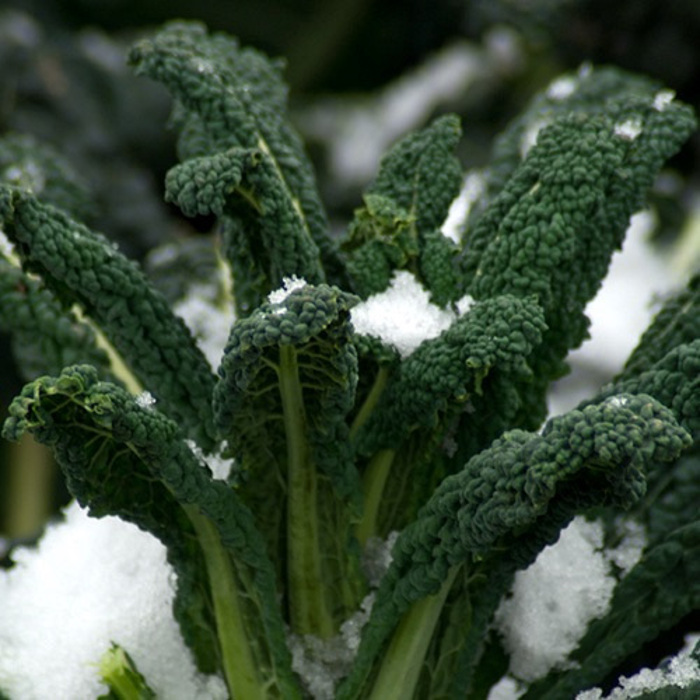
Black Magic kale covered in snow. Image courtesy of Home Farmer.
Why Do Containers Work Well For Leafy Greens
- I grow my lettuce with more intensive methods. In other words, leaf lettuce in particular can grow more closely together than many crops. Perfect for a container! Head lettuces such as romaine and bibb also work, but require more spacing.
- Containers offer more flexibility in location than a designated garden area. I believe they also help reduce pests.
- Greens can be so pretty! I love the shape and deep green color of spinach bunches. By ordering variety mixes, you can add nearly as much color to a patio or balcony as you can with a flowering plant.
- Need I mention convenience? How easy it is to have lettuce steps from the kitchen door.
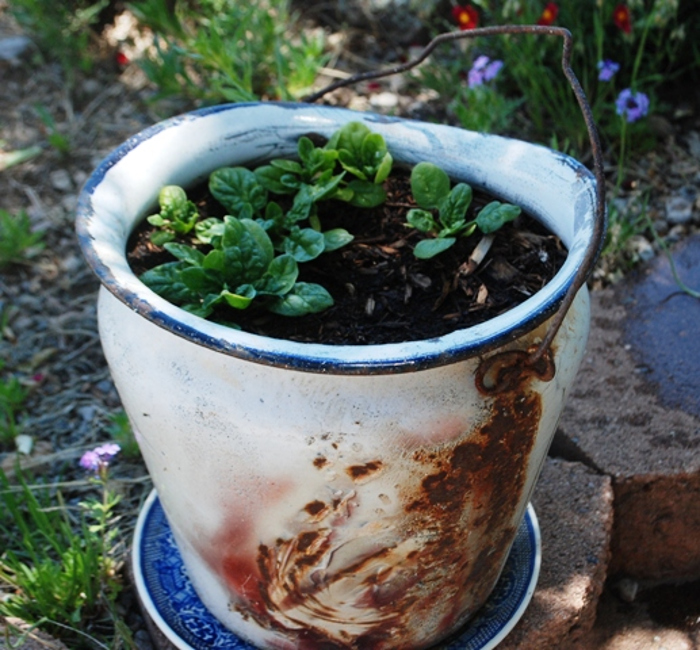
Spinach growing in an old milk pail from last year.
Planting Leafy Greens in Planters
Start with a good-quality potting or seed-starting soil. Fill it an inch or two below the rim to prevent soil, water, even seeds from running over once filled and watered. Dampen the soil and sprinkle seeds. If you prefer more orderly arrangements, make a shallow furrow to drop seeds in. Most greens can germinate in temperatures of 40 to 60 degrees F.
I love to plant loose-leaf, cut-and-come again lettuces, especially in containers. Plant lettuce seeds at about one-fourth inch depth. Lightly cover the seeds and pat the dirt gently. Water slowly and carefully at first to prevent seed migration (a big bunch of mesclun in one corner of an otherwise empty container). Keep the soil evenly moist until seedlings emerge.
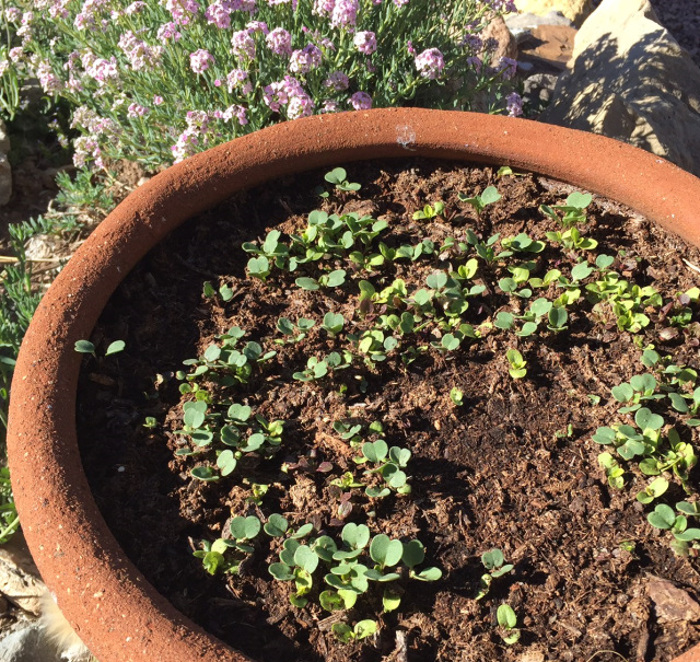
These loose-leaf seedlings came up quickly in a patio container. You can see that I either distributed them unevenly or watered a little too quickly, causing some bunching of seeds.
Caring For Leafy Greens in Pots
Once seedlings are up, you can water less often, but more deeply to help the greens establish roots. It can still help to thin seedlings, at least in areas of the container where the plants are bunched up. One of the biggest benefits to growing cool-weather greens in containers is flexibility. As weather warms or shadows change, you can move your container to a spot that gets afternoon sun, or to the north patio of your home to extend the plant’s season.

Arugula prefers cool temperatures, but this container gets only morning sun.
With loose-leaf lettuce, you can harvest in a matter of weeks, and again later (maybe even three times). It’s best to cut outer leaves when they reach about two to three inches. Harvest all but baby greens in the morning and cut some every day if you have enough!
Cleaning and Storing Leafy Greens
Even though you’re growing your own greens in sterile pots with organic methods, you still should rinse harvested leaves at least once in cold water and spin or shake them to partially dry as soon as you harvest. Spinach is notorious at hiding little specks of soil that splash up on leaves when watering. And birds or bugs can get between leaves. Don’t have a spinner? Use a clean kitchen towel or hosiery bag for the washer. You’ll get a little exercise as you stand on the patio swinging your greens around!
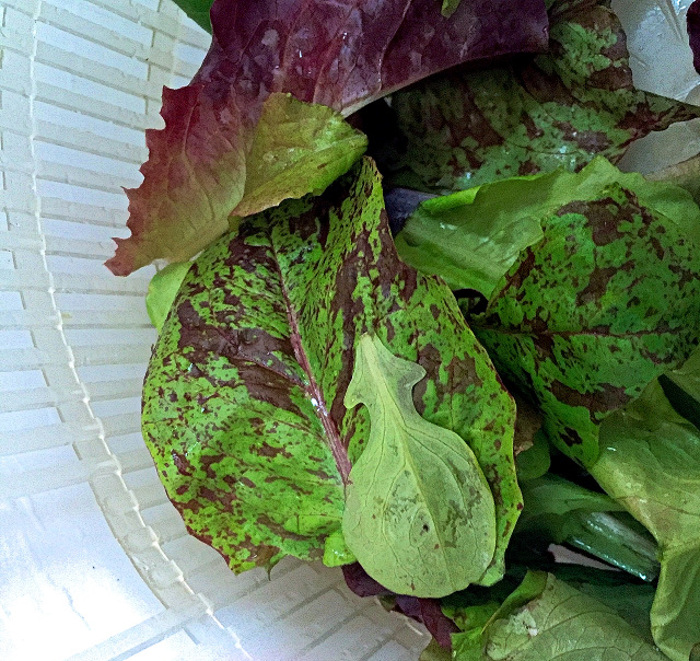
The pretty organic mesclun leaves I picked this morning in the spinner.
Store most greens in plastic containers in the refrigerator. We place a small paper towel with our loose-leaf varieties (and spinach) in a sealable bag and date it. It usually lasts at least a week, and spinach typically lasts longer. Kale should be in a sealed bag, and lasts only a few days. Wrap arugula in a damp paper towel and put it in a vented plastic bag.
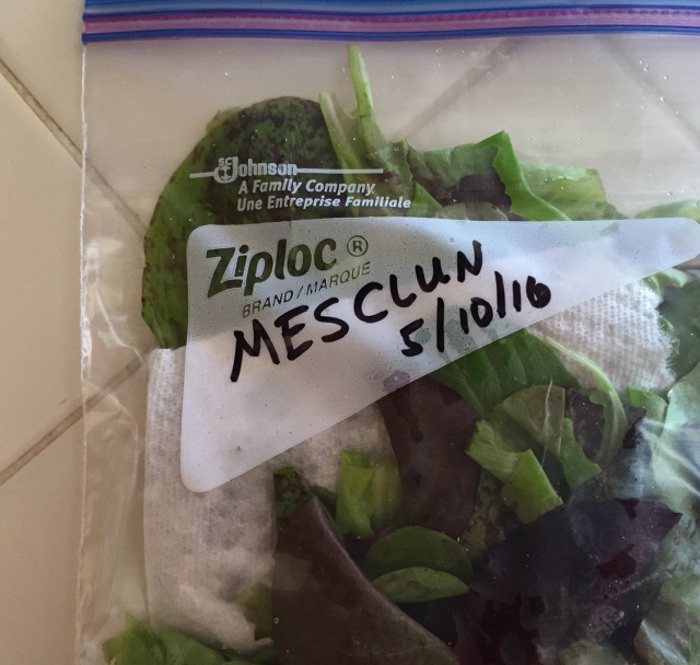
After spinning, bag greens with a paper towel, push out most of the air, and mark the date.
 |
Author Teresa Odle - Published 12-10-2020 |
